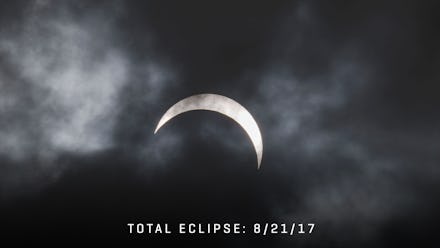Where can I see the 2017 Solar Eclipse? You’ll be able to view from anywhere in the U.S.

A swath of the U.S. 70 miles wide will have a chance to see the moon completely block out the sun in August. Here’s how to find out if you hit the jackpot. But say you can’t make it to that band, or say you do and it’s cloudy — is all hope lost?
Only that narrow totality band will get the ultimate solar eclipse experience of seeing the moon block out all but the outermost layer of the sun. A lot of astronomy buffs are downplaying the partial solar eclipse in a bid to try to encourage people to go see the real deal. But not everyone can drop everything and travel hundreds of miles on a Monday afternoon, so let’s stop writing off the rest of the country.
Everywhere in the U.S. (even Alaska and Hawaii) will experience a partial solar eclipse, when part of the moon will block out part of the sun. This is more common than a total solar eclipse, but it’s nothing to sniff at if this is your first eclipse.
To have a sense of how dramatic the eclipse might be in your location, check out this video. The red streak is that totality band. People in the dark rings depicted around the moon will see a partial solar eclipse — the darker the ring you’re in, the more of the sun will be hidden.
A few clouds can’t rain on this parade
So you can predict how dramatic of an eclipse you’ll see, but what if unpredictable weather steps in?
If you’ve been looking online, you’ve probably read throw-away lines about not being able to see the eclipse because of clouds. Strictly speaking, that is true: If clouds block the sun, you will not be able to watch the moon block the sun. If it’s feasible to relocate someplace sunnier, it’s definitely worth a try. But, again, we’re being pragmatic here.
But even if you’re stuck with clouds, you won’t see just another afternoon. Within the path of totality, it will become night-like — “pitch black” if it’s truly overcast, according to an informational website run by 12-eclipse veteran Dan McGlaun. To get a sense of the stark difference, check out the before-and-after photos at the bottom of this page. The effect will be more dramatic the closer you are to the path of totality.
(Note: Spotty clouds do not protect your eyes. You still need real filters. Do not try to make your own or use sunglasses. If you can see the sun, you need eye protection.)
If this still sounds logistically difficult, remember, in many places this will be happening at what one could conceivably call lunch time. So even if you’ll be stuck in a windowless office on Aug. 21, maybe you should by coincidence have some lunch plans.
What you need to know about this summer’s total solar eclipse — the first to hit North America in nearly a century. Find out how to use NASA’s interactive map and the best places to go to see the rare event. You can also learn the physics behind the eclipse and the words to use when you talk about it.